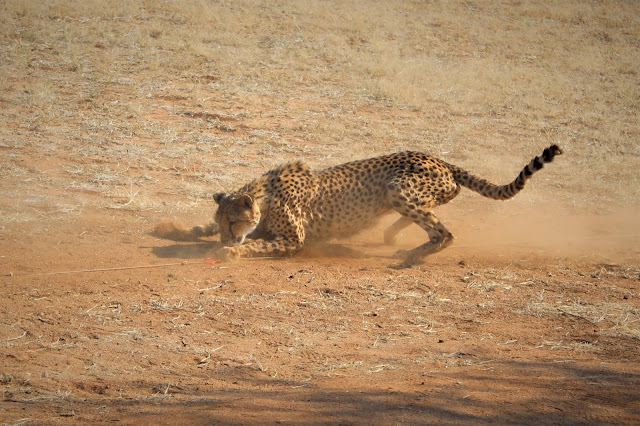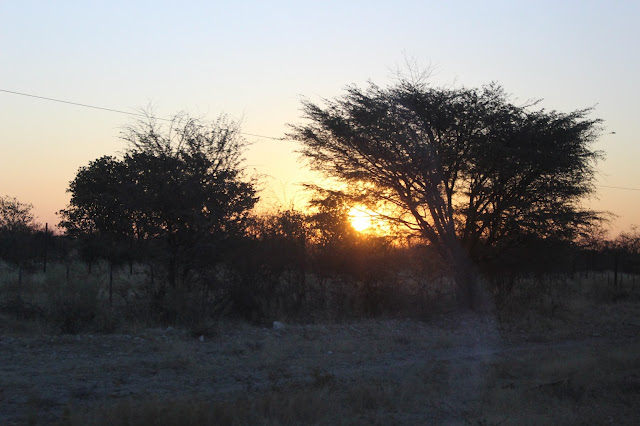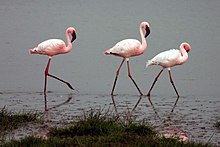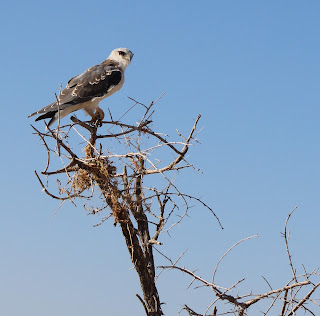While Kelda was here, she and I went to the coast. We left Bruce behind to do that thing called work which allows Kelda and I the money to go.
Swakopmund is
different than any other part of Namibia. It is the main tourist destination for the locals. The town is a study in contrasts. You drive through desert and sand dunes until you hit the coast. Fog blankets the coast most of the day. There is a cold current coming up from Antarctica, which keeps the sea water very cold. The air and land is desert and warm, resulting in fog. The fog gives moisture, allowing more plant life than most of Namibia. The coastal gardens were stunning.
 |
There is a German influence in the architecture.
|

 |
Kelda tried sticking her toes in the water. It lasted all of three seconds.
|
While there, Kelda and I took a half day bay cruise out in the harbor. We learned about oyster farming, which is becoming a major business. We got up close and personal with the pelicans and seals, getting to feed them from and on the boat.
There were hundreds of seals. The colonies here in Walvis Bay are quite small compared to up north of Swakopmund at the Cape Cross Seal Reserve. There the seals number in the thousands. I have not been there, but the guide books say it is the smelliest place on earth. I can believe that. The smell coming from this smaller colony was bad enough. They were entertaining to watch.
We also saw two different types of dolphins. We were not lucky enough to spot any whales that day, although there are frequent spottings near the opening of the bay.
After the cruise, we spent the afternoon in the desert. The sand dunes come right down to the ocean in many places. We are talking big dunes, not just little beach dunes. We drove past a salt processing plant and salt beds which were very interesting. They use evaporation beds to harvest the salt. Most of the salt produced here in Namibia is pure and for industrial or chemical use.

We toured in a four wheel drive. It was beautiful, but some of those dunes are a bit steep!
I doubt you can really get the feel of it from these pictures, but these are pictures of the truck going down this dune.


The next morning Kelda convinced me that we
needed to go quad biking on the dunes and sand boarding. According to my daughter, going 80 km down a sand dune on a
waxed sheet of what looked like flimsy shower board was something that we really
needed to do.


Anyway, here we are quad biking--again those dunes are pretty high and steep. You get to the edge to start down and you can't see anything but air! After a couple of times of literally freaking out, I actually had quite a bit of fun, but I will continue to deny it. I don't want to give Kelda the satisfaction of being right about doing this.
Being out on the dunes makes you feel very small.
Sand boarding, however, was a bit more terrifying. I have no pictures. You will just have to trust me on this. I really did it. You lay down on a waxed sheet of slick white board that is flimsy enough to bend. You grab hold of the top, curve it up and stick out your elbows. You use your toes to "steer", putting one foot down in the direction you want to go. Then our wonderful guides push you off a cliff of sand. In about 5 seconds you reach the bottom. At this point, I was still alive, but sand blasted from head to foot. Then you get to climb up the dune! I did this once. Kelda did it twice. One heart attack is enough for me. Although I will admit that after a shower, my skin was radiant!
 |
| Light house in Swakopmund. |
 |
| Palm tree lined street. |

 Eating time!
Eating time!






























































